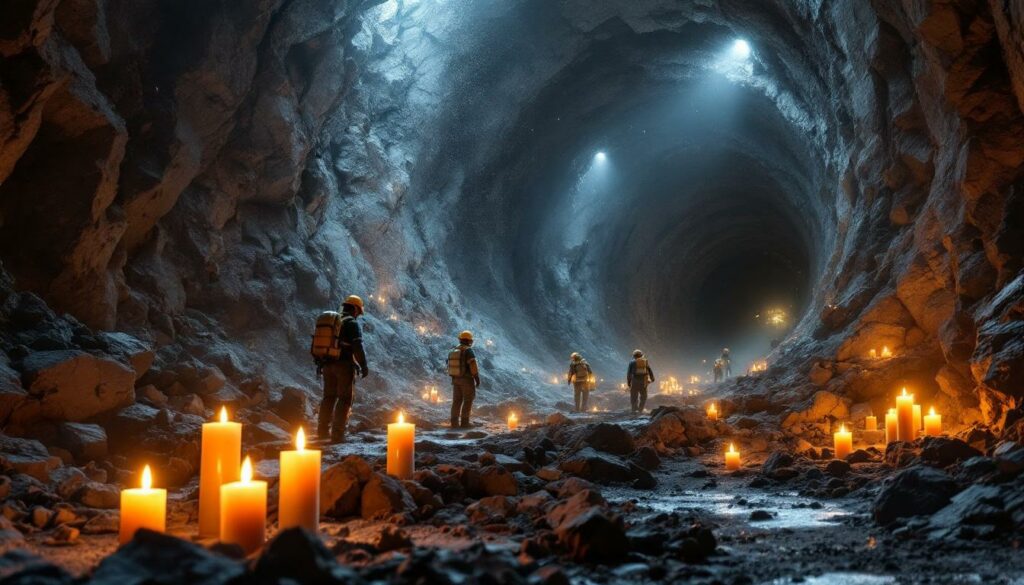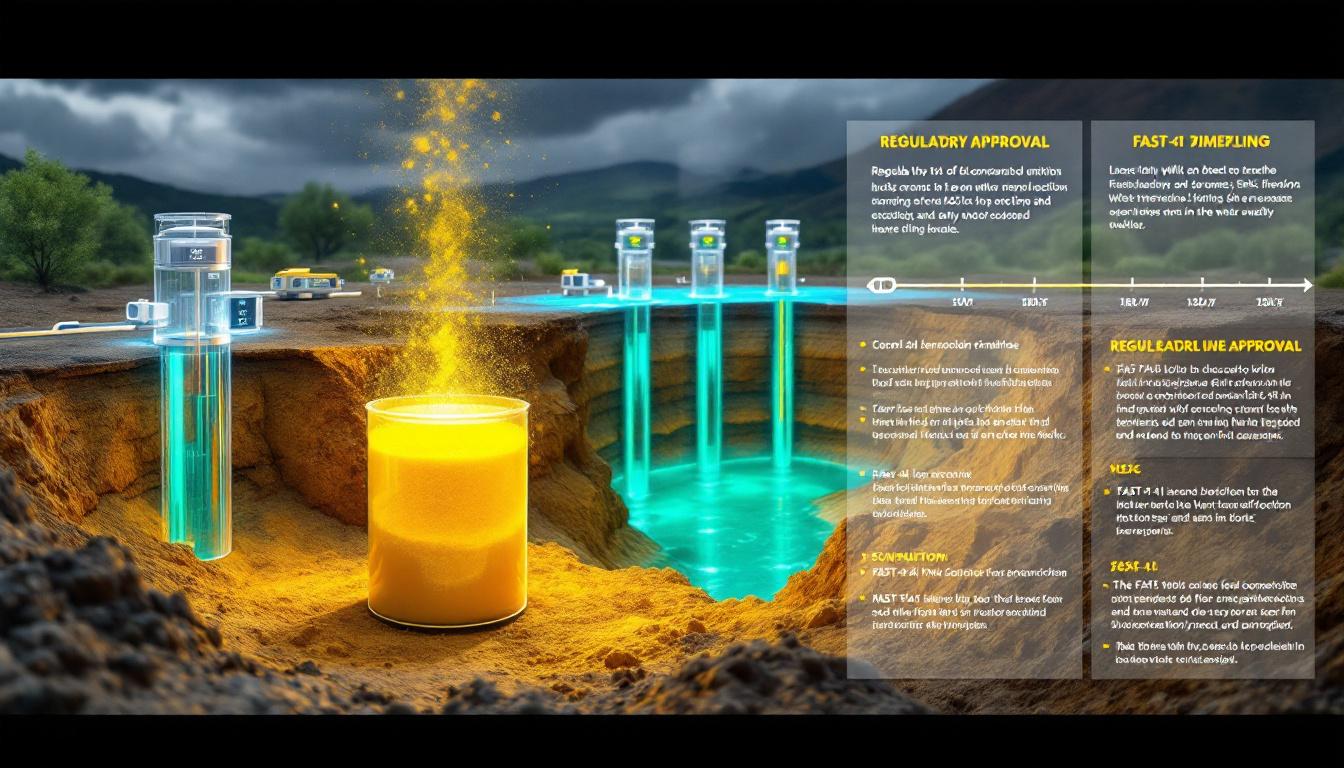The Deadly Collapse at Chile's Largest Copper Mine: A Tragic End to the Rescue Effort
On a Thursday in August 2025, what began as a normal workday at Chile's famed El Teniente copper mine quickly descended into catastrophe. A 4.2-magnitude seismic event triggered a devastating tunnel collapse in the Andesita section, leading to Chile's deadliest mining accident in decades.
Six workers lost their lives in the collapse, with one body recovered immediately and five others located during a frantic weekend rescue mission. Unlike the miraculous 2010 San Jose mine rescue—where 33 miners were pulled alive from underground after 69 days—the El Teniente operation ended in heartbreak as rescuers located only deceased victims.
"This tragedy has struck at the heart of Chile's mining community," said Maximo Pacheco, Codelco's chairman, in a somber press conference. "Each life lost represents an irreplaceable member of our mining family."
The collapse occurred in a newly developed section of the 120-year-old mine complex. El Teniente, known as one of the world's largest underground copper mines, has been a cornerstone of Chile's mining industry for generations.
What Caused the Fatal Mining Accident?
Preliminary investigations point to the 4.2-magnitude seismic event as the direct trigger for the collapse. What remains puzzling to experts is why a relatively moderate seismic event caused such catastrophic damage, especially given that Chilean mines typically incorporate engineering designed to withstand stronger seismic activity.
The collapse affected the Andesita section—part of Codelco's multi-billion-dollar development project pipeline aimed at maintaining production as older sections of the mine deplete. This particular section was still under development, raising questions about whether new tunnels might have had different structural characteristics than established mining areas.
A dedicated rescue team of over 100 personnel worked around the clock in the days following the collapse. Some of these rescuers had previously participated in the famous 2010 San Jose mine rescue, bringing valuable experience to the operation. Despite their expertise and tireless efforts, the outcome was tragically different this time.
Codelco has completely halted all mining operations at El Teniente following the disaster, an unprecedented step that underscores the severity of the incident.
Codelco's Response and Investigation Plans
In the wake of this tragedy, Codelco, Chile's state-owned copper giant, has launched a comprehensive response plan centered on determining exactly what went wrong and preventing similar disasters in the future.
"We have opened an investigation to determine if there were failures," Chairman Pacheco stated firmly. "If any responsibility lies with our supervisors or executives, we will apply maximum measures."
The company has taken the extraordinary step of commissioning an international panel of experts to conduct an independent audit of the El Teniente mine. This audit will examine all aspects of the operation, from structural engineering to safety protocols and emergency response procedures.
"We're going to commission an international audit to determine what we did wrong," Pacheco emphasized, demonstrating the company's commitment to transparency and accountability.
Critical Safety Questions Requiring Answers
Several pressing questions remain at the forefront of the investigation:
-
Seismic resilience: Why did a 4.2-magnitude event cause catastrophic failure when Chilean mines typically incorporate engineering designed to withstand stronger seismic activity?
-
Early warning systems: Were there any precursor signals or abnormal readings that should have triggered preventive action?
-
Safety protocols: Were all established safety procedures followed prior to and during the seismic event?
-
Structural integrity: Did the tunnels in the newer Andesita section meet all engineering specifications for seismic resilience?
When questioned about whether there had been prior safety concerns at the site, Pacheco stated that "no official complaints had been received either anonymously or otherwise." However, this will be a key focus of the independent investigation.
Codelco has postponed its quarterly results reporting that was scheduled for Friday, redirecting all corporate focus to addressing the accident and supporting affected families. This decision reflects the gravity with which the company is approaching the disaster's aftermath.
Impact on Copper Production and Codelco's Future
The El Teniente mine disaster represents not only a human tragedy but also a significant disruption to global copper supply chains. As one of the world's premier copper producers, any extended shutdown at El Teniente has far-reaching implications.
El Teniente accounts for approximately 25% of Codelco's total copper output, making it a cornerstone of the company's production capability. The indefinite suspension of operations creates a substantial gap in global copper supply forecast at a time when demand continues to grow.
Production Challenges Amplified
This tragedy compounds Codelco's existing production challenges. The company has been struggling to return to pre-pandemic production levels of approximately 1.7 million tons annually, with current output hovering around 1.4 million tons per year.
The timing of the disaster is particularly problematic as the Andesita section was part of Codelco's strategy to maintain production levels as older sections of the mine reach the end of their productive life. Along with the Diamante and Andes Norte projects, the Andesita development was key to El Teniente's future viability.
Industry analysts note that this setback will likely further delay Codelco's efforts to recover from its years-long output slump. The company now faces difficult decisions about prioritizing safety improvements while also maintaining its position as a global copper leader.
Market Impact Assessment: While short-term copper price insights suggest fluctuations are expected, the long-term impact depends entirely on the duration of El Teniente's shutdown and what safety overhauls may be required across Codelco's operations. With Chile accounting for approximately 25% of the world's mined copper, extended disruptions could significantly affect global supply balances.
The restart timeline remains uncertain, contingent on the investigation's findings and the implementation of necessary safety measures. Given the severity of the incident and the comprehensive nature of the planned international audit, industry experts suggest operations may remain suspended for weeks or even months.
Historical Context and Safety Record
The El Teniente tragedy, while devastating, is unfortunately not without precedent in Chile's mining history. The country's rich mining tradition has been punctuated by several major disasters that have shaped safety regulations and practices over decades.
Previous Mining Disasters in Chile
The deadliest accident in Chilean mining history occurred at El Teniente itself in 1945, when a catastrophic fire generated lethal clouds of smoke and carbon monoxide, killing 355 workers. This historical tragedy led to fundamental changes in mine ventilation and emergency response protocols.
More recently, in 1994, 21 miners died in a firedamp gas explosion at the now-closed Schwager coal mine. This incident spurred additional safety measures specifically targeting combustible gas detection and management.
The 2010 San Jose mine collapse, while not fatal, trapped 33 miners for 69 days before their miraculous rescue. This event became a global media phenomenon and showcased both the dangers of mining and the possibility of successful rescue operations under extreme circumstances.
Recent Safety Incidents at Codelco
Despite industry-wide safety improvements in recent decades, Codelco has experienced several fatal accidents in recent years:
- A worker died at the Radomiro Tomic open pit earlier in 2024
- Another worker at the Ventanas division died in a separate incident in 2024 while repairing a warehouse roof
- An electrical technician at El Teniente lost his life in an accident in 2023
These incidents, culminating in the current tragedy, have raised questions about safety culture and practices across Codelco's operations. The string of fatalities suggests possible systemic issues that the upcoming international audit may help identify.
Chilean mining regulations have generally been considered robust by international standards, but implementation and enforcement have sometimes been criticized. The country's unique geological challenges—including significant seismic activity—create additional safety complexities not faced by mining operations in more geologically stable regions.
Expert Analysis and Future Safety Measures
Mining safety experts emphasize that underground mining in seismically active regions presents unique challenges requiring specialized engineering and monitoring systems. While it's too early to determine exactly what went wrong at El Teniente, several potential areas for improvement are already being discussed within the industry.
Potential Safety Improvements
Based on preliminary information and past mining disaster responses, several areas of focus have emerged:
-
Enhanced seismic monitoring systems: More sophisticated real-time monitoring could potentially provide earlier warnings of dangerous ground conditions.
-
Reinforced tunnel infrastructure: Reviewing and potentially upgrading structural reinforcement standards, especially in newer development areas.
-
Emergency refuge chambers: Ensuring adequate emergency shelters are positioned strategically throughout mining operations.
-
Evacuation protocol improvements: Refining emergency response procedures to enable faster evacuation during seismic events.
-
Communication system redundancy: Implementing multiple backup systems to maintain contact with underground workers during emergencies.
Safety Engineering Perspective: Modern underground mining operations typically incorporate multiple layers of protection against tunnel collapse, including rock bolting, shotcrete application, and steel mesh reinforcement. The investigation will likely focus on whether these systems were adequately designed and implemented in the Andesita section.
Global Mining Industry Implications
The El Teniente tragedy is likely to reverberate throughout the global mining industry, potentially triggering:
- Increased regulatory scrutiny of underground mining operations worldwide
- Greater investment in predictive technologies for seismic activity in mining contexts
- Renewed emphasis on emergency response capabilities and rescue team preparedness
- Possible regulatory changes affecting mining practices beyond Chile's borders
Mining companies globally often look to major incidents as opportunities to review and enhance their own safety protocols. The findings from Codelco's international audit may well inform safety practices at copper investment insight and other underground operations worldwide.
Industry associations have already expressed solidarity with Codelco and the affected families while emphasizing the importance of learning from this tragedy to prevent future disasters.
FAQ About the El Teniente Mine Disaster
What is El Teniente's importance to global copper production?
El Teniente is one of the world's largest underground copper mines and accounts for approximately 25% of Codelco's total output. With Chile providing about a quarter of the world's mined copper, and Codelco being a major contributor to that supply, El Teniente plays a strategically crucial role in global copper markets. The mine's 120-year operational history also makes it one of the longest-running large-scale mining operations in the world.
How long will operations be suspended at El Teniente?
The duration of the suspension depends entirely on the investigation findings and what safety measures are deemed necessary before operations can safely resume. No specific timeline has been announced by Codelco. Similar incidents in the mining industry have resulted in suspensions ranging from weeks to months, particularly when structural issues are identified that require significant remediation.
Could this accident have been prevented?
This is precisely what Codelco's investigation and the international audit aim to determine. The company has stated that no official safety complaints had been received prior to the accident, but the investigation will examine whether there were warning signs that went unheeded or safety protocols that weren't adequately implemented. The fact that a 4.2-magnitude seismic event caused such catastrophic damage raises questions about the tunnel's structural design and reinforcement.
How will this affect copper prices?
While El Teniente represents a significant portion of Chile's copper production, the market impact depends on the duration of the shutdown and how quickly production can safely resume. Short-term supply disruptions could potentially support copper prices, especially if the investigation leads to wider operational reviews or temporary suspensions at other Chilean mines. However, market adjustments including increased production from other global suppliers may mitigate long-term price effects.
What compensation will be provided to the families of the victims?
While specific compensation details haven't been announced, Chilean mining companies typically provide comprehensive financial support to families of workers killed in industrial accidents. This often extends beyond legal requirements and includes both immediate assistance and longer-term financial security provisions. Codelco, as a state-owned enterprise, will likely face significant public pressure to ensure the families are properly supported.
What are the environmental implications of the mine collapse?
Based on currently available information, the collapse appears to be contained to the underground tunnel system without significant environmental releases. Unlike open-pit mining accidents that can result in tailings dam failures or chemical spills, underground collapses typically pose fewer immediate environmental risks. However, the investigation will assess any potential environmental concerns as part of the comprehensive review.
Will this accident affect Chile's broader mining industry?
Chile's mining sector will likely face increased regulatory scrutiny and safety reviews following this incident. As the country's largest mining company and a state-owned enterprise, Codelco's response will set important precedents for how safety is managed across the industry. While short-term disruptions are inevitable, Chile's position as a global copper leader is unlikely to change significantly in the long term, provided that appropriate safety improvements are implemented.
Looking Forward: Lessons from Tragedy
As the investigation proceeds and Codelco works to implement necessary changes, the mining industry worldwide will be watching closely. The lessons learned from this disaster will undoubtedly influence safety practices, regulatory approaches, and emergency response protocols across the global mining sector.
For the families of the six workers who lost their lives, no investigation findings or safety improvements can truly compensate for their loss. Their sacrifice underscores the continuing dangers faced by mining professionals and the critical importance of prioritizing worker safety above all other considerations.
The El Teniente tragedy serves as a somber reminder that despite technological advances and improved safety protocols, mining remains an inherently dangerous profession that requires constant vigilance, investment in safety systems, and a culture that values human life above production targets. As rescue ends in tragedy in El Teniente mine Codelco asks experts what went wrong, the findings will likely reshape safety standards across the industry.
Furthermore, this incident occurs at a critical time when surging copper demand for electric vehicles and renewable energy infrastructure is putting pressure on mining companies to increase production. The balancing act between meeting this demand and ensuring worker safety has never been more challenging or more essential.
The mining community worldwide, particularly those involved in gold and copper exploration, will need to carefully examine the conclusions from this tragedy to implement appropriate safety measures in their own operations.
Disclaimer: This article presents information based on currently available reports following the El Teniente mine tragedy. As the investigation proceeds, additional facts may emerge that could alter some conclusions. The analysis of production impacts and market effects represents informed speculation rather than definitive forecasts.
Investing in Mining Stocks? Don't Miss Critical Discoveries
Stay ahead of the market with Discovery Alert's proprietary Discovery IQ model, which provides real-time notifications of significant mineral discoveries on the ASX. Understand why major discoveries like those from De Grey Mining can generate substantial returns by exploring the dedicated discoveries page.




